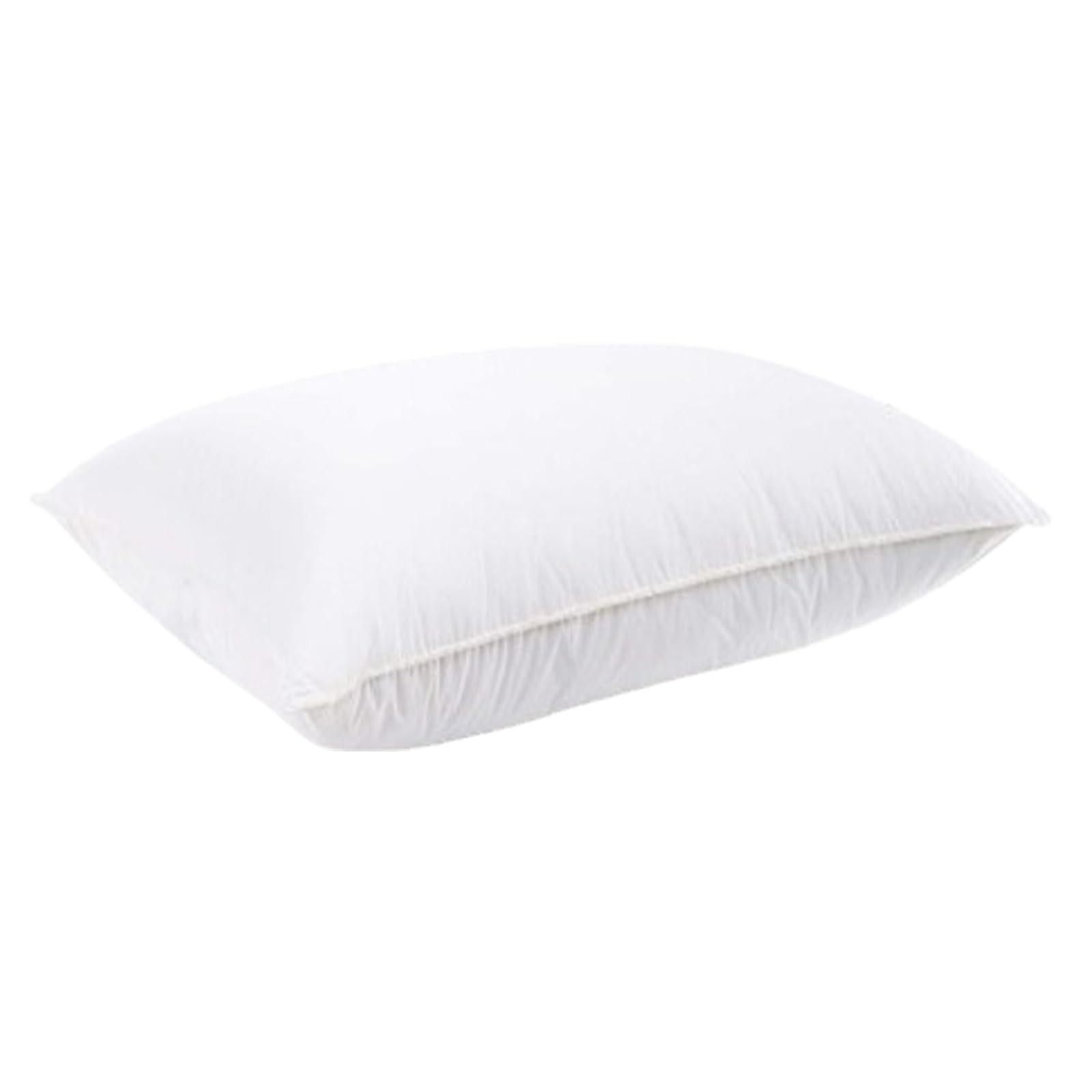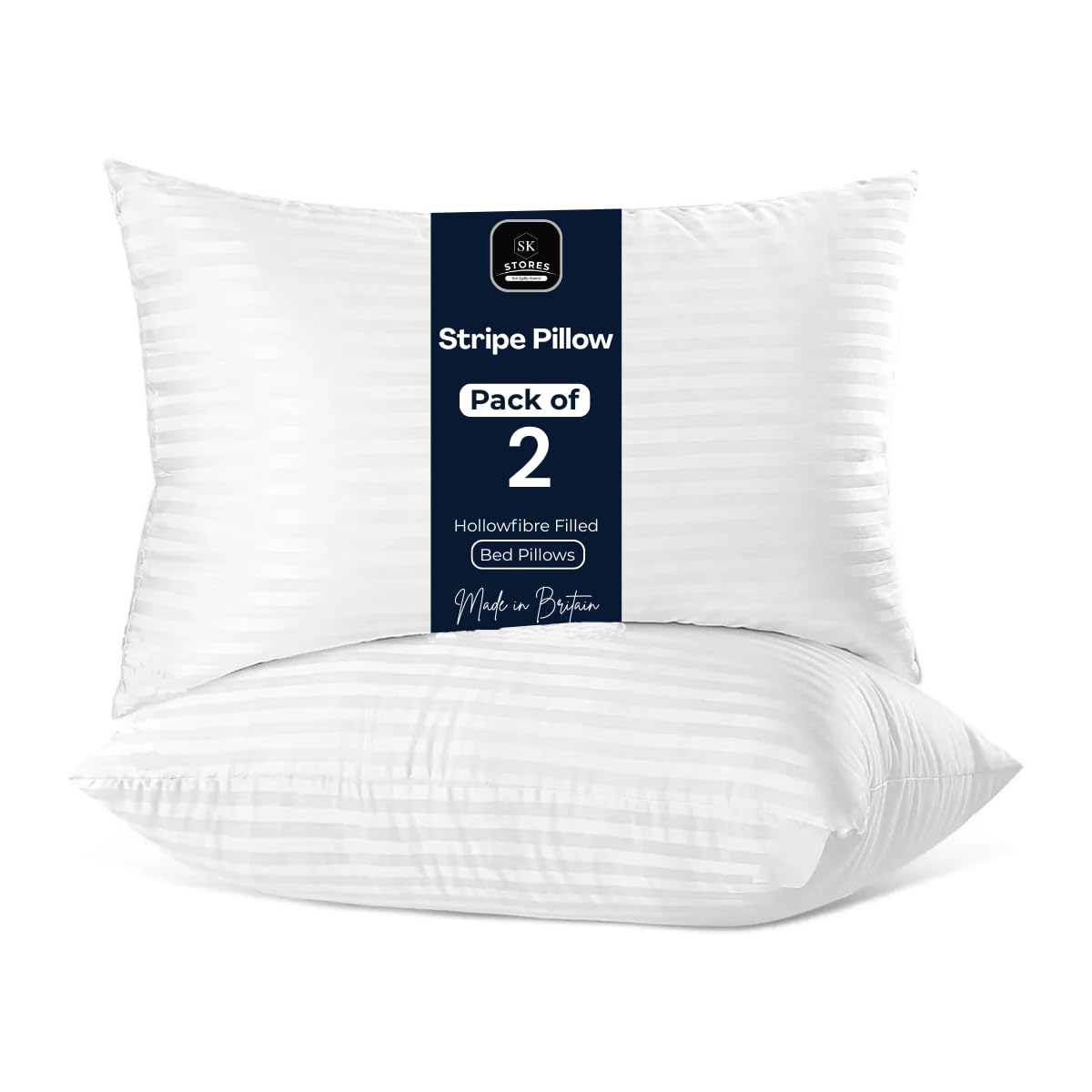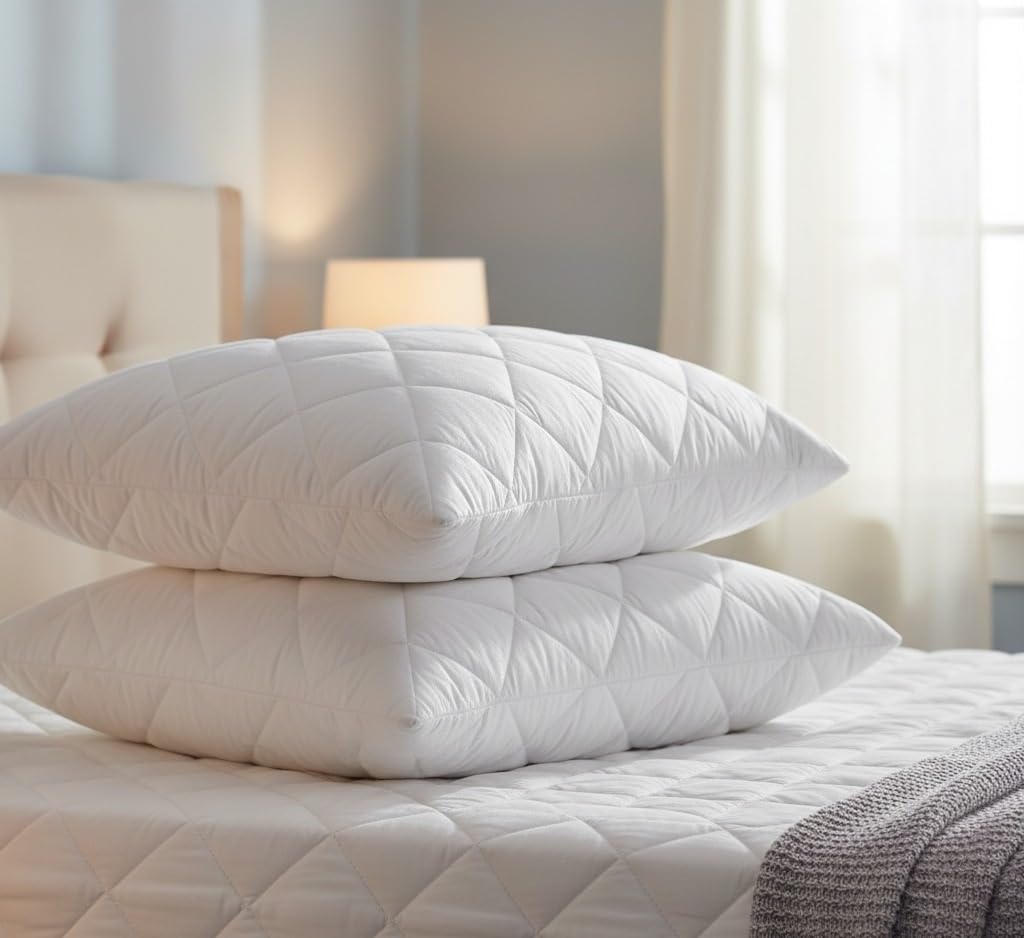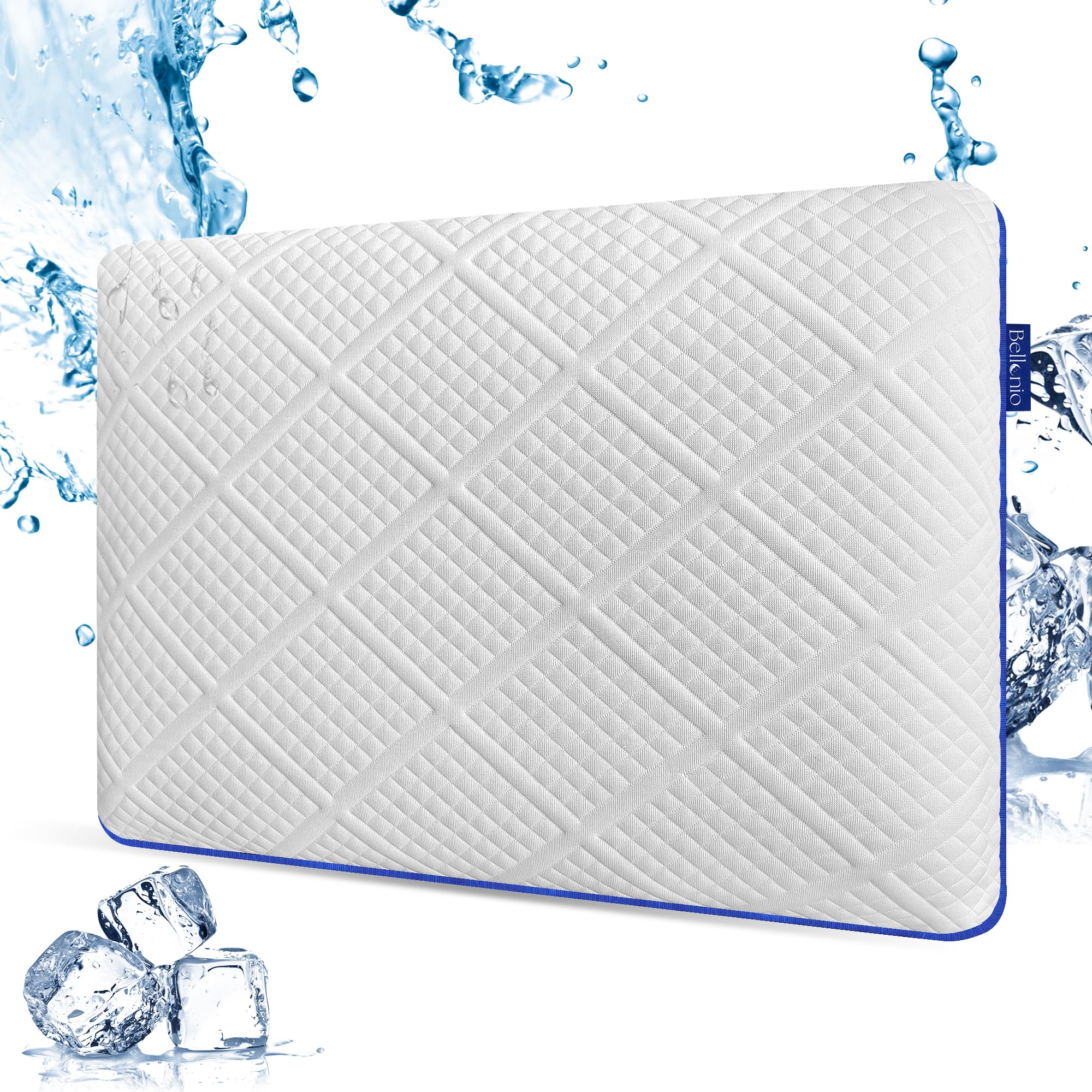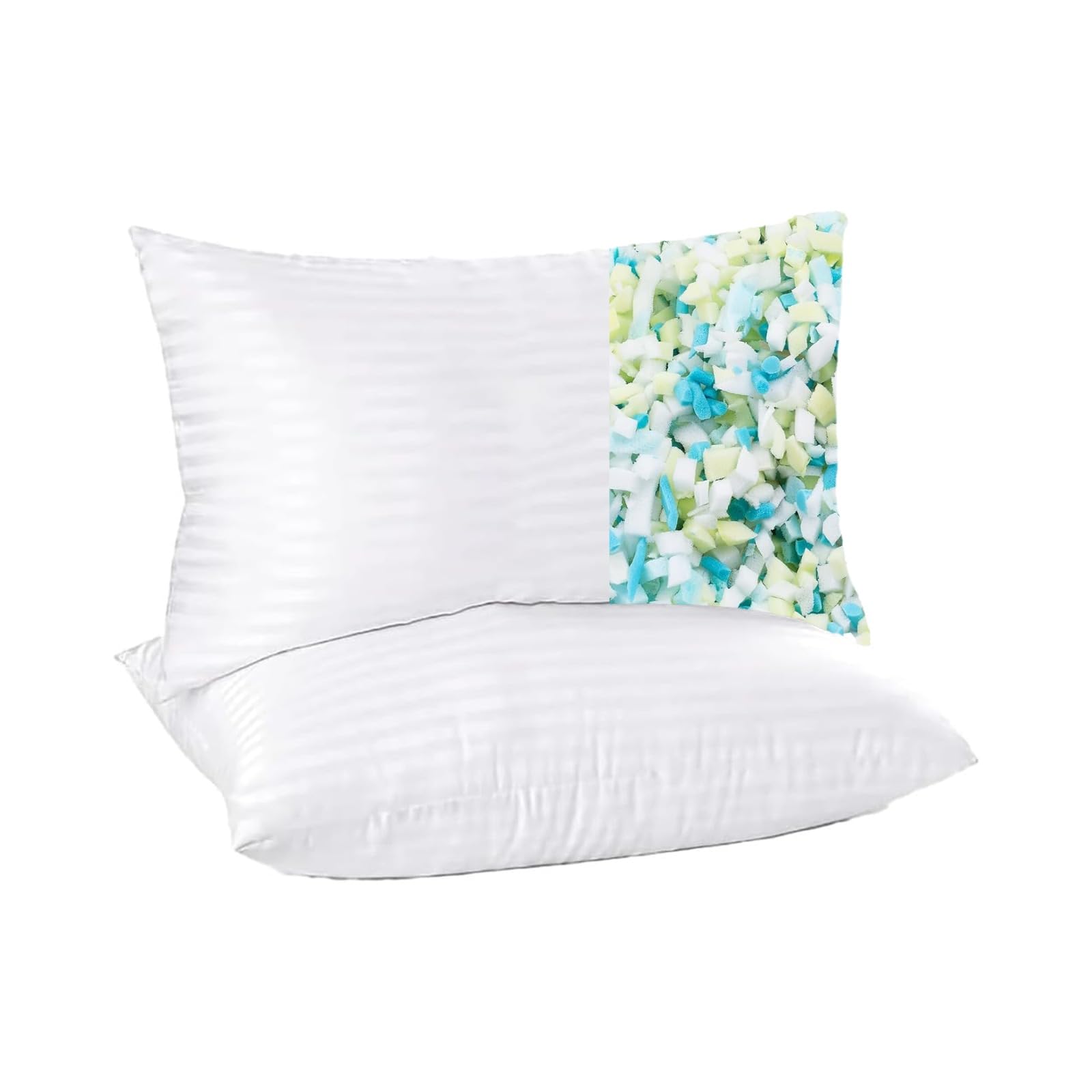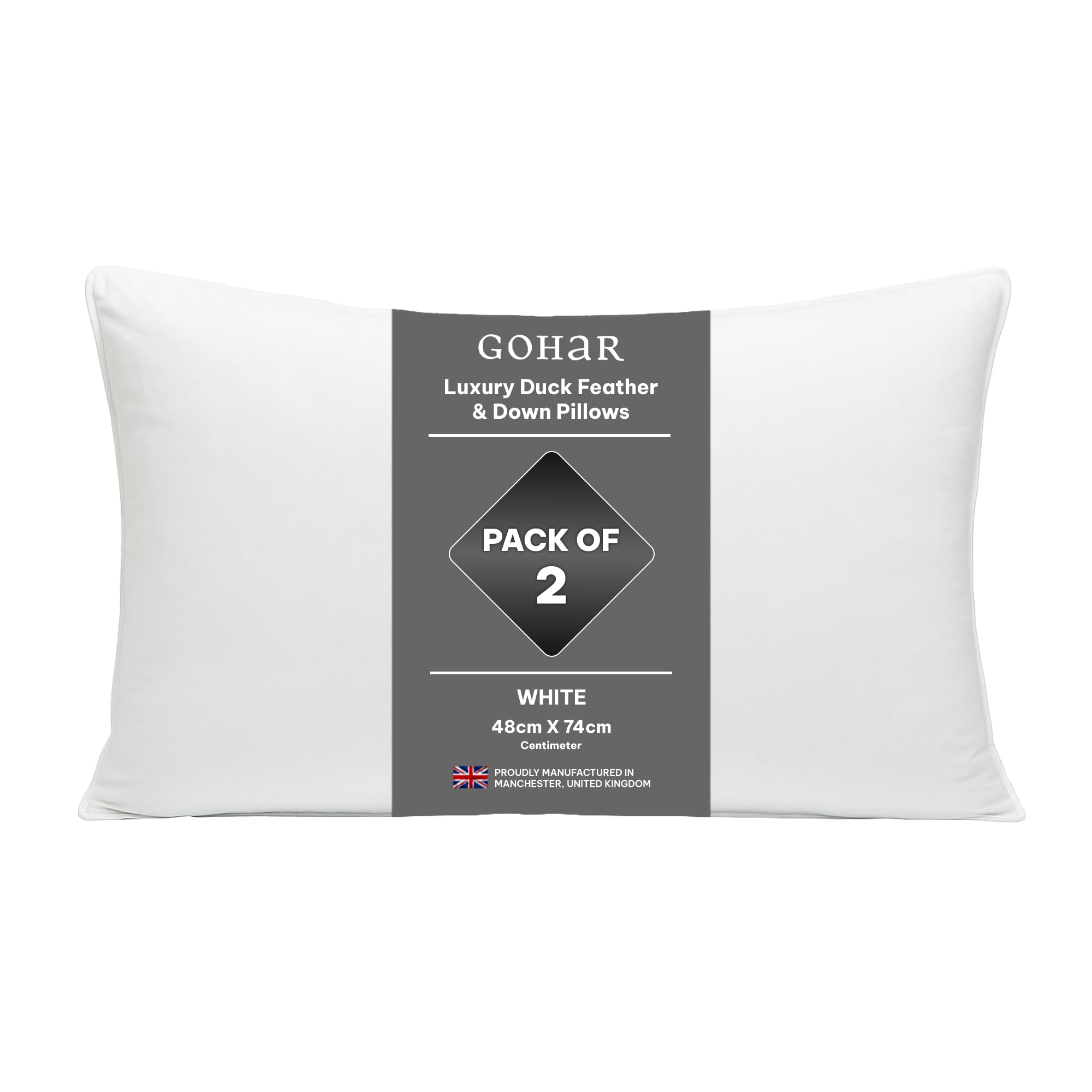Back sleepers have two good pillow styles to choose from: a gentle contour that supports the neck’s curve, and a classic flat pillow with the right height. This guide helps UK readers pick between them, explains how mattress firmness and shoulder width change the ideal loft, and shows simple checks you can do at home to tell if your current pillow is helping or hindering.
Neck comfort starts with pillows matched to sleep position and consistent loft.
What a back sleeper needs from a pillow
Your neck has a natural curve. A good pillow fills the space between the back of your head and your shoulders, supporting that curve without pushing your head forward. Too high and your chin tilts toward your chest. Too low and your head tips back. The goal is a neutral position that lets muscles relax so you wake without stiffness.
Contour pillows: shape that follows the neck
Contour pillows have a raised ridge under the neck and a lower area for the back of the head. The design suits back sleepers who like a consistent spot to rest and who benefit from clear neck support. Choose a contour height that matches your body. If the ridge feels like it forces your head forward, drop to a smaller size. Memory foam contours deeply and can feel stable. Latex contours with more bounce and feels cooler for some people.
Flat pillows: simple and versatile
A well chosen flat pillow can be just as supportive. Look for medium loft that compresses to a comfortable height when you lie down. Adjustable pillows filled with shredded foam let you fine tune the loft during a week of testing. Fibre pillows feel soft but can flatten over time, so plan for regular replacement if you choose that route.
Match pillow height to mattress firmness
On a soft mattress, your body sinks more, reducing the height your pillow needs to provide. On a firm mattress, you stay higher and need a bit more loft. Back sleepers on firm mattresses often like a medium to high contour or a flat pillow that compresses less. On softer beds, a lower contour or a medium flat pillow is often enough.
Quick at home alignment checks
Lie on your back and have someone take a side photo from waist height. Your forehead and chin should be level or the forehead a touch higher. If the chin lifts, your pillow is too tall. If the forehead drops, it is too low. Pay attention to how you feel when you read in bed too. If a pillow only feels comfortable when stacked, you likely need a different loft or a backrest cushion for reading so you do not distort your sleep setup.
Heat and fabric feel
Back of head warmth is a common complaint. Choose breathable covers and consider a pillow with perforations or channels. Cotton pillowcases feel cooler than heavy knits. If a foam pillow runs warm, a light cotton protector and a crisp case can make it feel comfortable again without changing the core feel.
We shortlist contour and flat options that fit back sleepers in our guide to pillows for UK back sleepers. For full alignment, pair with a topper if your mattress is too firm, and use breathable sheets to keep cool.
FAQs
Are contour pillows better for back sleepers?
They can be, especially if you want clear neck support. Many back sleepers do well with a flat pillow of the right height. Test both and judge by morning comfort.
What loft should I choose?
Medium for most back sleepers, adjusted for mattress firmness. Use photos and how your neck feels in the morning to fine tune.
Do adjustable pillows help?
Yes. Being able to add or remove fill lets you tune loft rather than hoping a fixed height works. Make small changes and test for a few nights.
